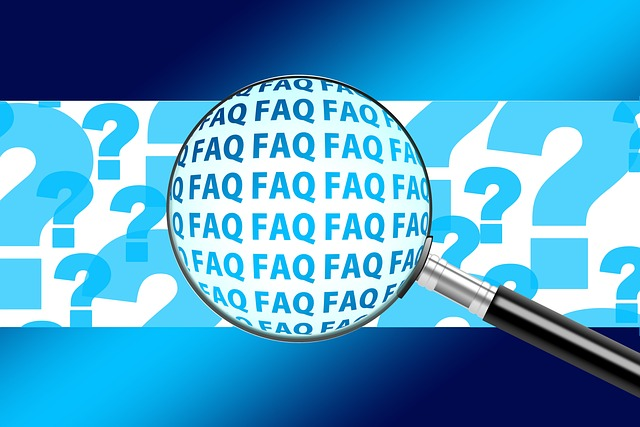What is Accounting?
Accounting is a systematic process to record a business’s financial transactions. It helps business owners understand their costs and profits.
At its core, accounting is about helping to define and understand a company’s financial position. It can help small business owners make important financial decisions, define operational processes, prepare taxes, and more.
What Accounting Terms Should Business Owners Know?
Here is a glossary of basic accounting terms. We also include the common abbreviations where applicable.
Accounting Period
The accounting period is a defined amount of time during which accounts measure the accounting cycle. Accounting periods are most often fiscal years, calendar years, or quarters. It can also be monthly.
Some companies will generate reports for different accounting periods. For example, a company might run a calendar year accounting report (Jan-Dec) and then run reports for each quarter, which is three months. So Q1 = Jan-Mar, Q2 = Apr-June, Q3 = Jul-Sep, Q4 = Oct-Dec.
Accounts Receivable (AR or A/R)
Accounts receivable tracks the money owed to your business from customers, clients, vendors, etc. This accounting principle is primarily used by businesses that sell on credit and issue invoices, which we’ll cover. It’s considered an asset, which we’ll also cover.
Accounts Payable (AP or A/R)
Accounts payable tracks the money your business owes to other parties. Examples include payments to vendors or suppliers, business loans, bills, invoices, and credit line debts (for a business line of credit or credit card). AP is considered a liability, which is covered further down.
Accrual Basis Accounting
In accrual basis accounting methods (or simply accrual accounting), income and expenses are recorded at the time they occur instead of when the money is exchanged. For example, if you deliver goods for $2,000 and issue an invoice for it to be paid, accrual accounting registers the $2,000 the day the invoice is issued and not when the customer pays. Publicly traded companies and larger businesses typically use accrual accounting. Small businesses usually prefer cash basis accounting, covered further down.
Allocation
Allocation refers to assigning funds to a particular period or account. For example, a cost could be allocated over several months, such as insurance.
Amortization
Amortization is an accounting technique that businesses use to periodically lower the book value of an intangible asset or loan over a set period. With loans, amortization spreads out payments over time. Amortization of an asset is similar to depreciation.
Assets (Fixed Assets – FA & Current Assets – CA)
Assets refer to anything your business owns with a monetary value. The two most common classifications are fixed assets (FA) and current assets (CA).
A fixed asset has a long-term value that won’t be used within an accounting period. Examples include commercial real estate, equipment, or vehicles.
Current assets are short-term property that will likely be used within the fiscal year. Examples include cash, inventory, or accounts receivable.
Asset Classes
Assets are typically organized into various classes, which refers to how they behave or are perceived in the marketplace. There are various asset classes, but the most common are:
- Equities or stocks.
- Fixed income or bonds.
- Cash equivalents or money market instruments.
Asset Types
Classes are a broad categorization of assets, but asset type better describes what it is. Common asset types include:
- Liquid: Cash or anything that can be easily converted into cash.
- Physical or Tangible: Assets that physically exist and typically have to be sold to become ash. Examples include equipment or real estate.
- Intangible: An intangible asset is a nonphysical entity of value. Examples include intellectual property, trademarks, copyrights, computer software, and patents.
Balance Sheet (BS)
A balance sheet, sometimes called a “statement of financial position,” is a financial report that summarizes a company’s assets, liabilities, and owner’s equity. Some accountants abbreviate it BAL SH.
Bookkeeper
A bookkeeper logs a business’s day-to-day transactions and financial activity. Some might perform weekly or monthly reconciliations. A bookkeeper usually sends the books to an accountant for review and approval each accounting period (quarterly is most common).
Bookkeeping
The day-to-day process of recording accounts, transactions, and other business financial information.
Book Value (BV)
The original value of an asset minus its depreciation or liability.
Capital (CAP)
Capital refers to a financial asset or the value of a financial asset. Examples include cash or goods.
Cash Basis Accounting
Cash basis accounting records a company’s financial transactions when the money actually changes hands. It’s the opposite of accrual accounting, defined above.
Cash Flow (CF)
Cash flow is the money that moves in and out of a company during a given accounting period. It’s sometimes referred to as the “lifeblood of business.”
Cash Flow Statement
The cash flow statement summarizes the money flowing in and out of the business in a given accounting period. It’s a standard financial statement that businesses issue. It determines net cash flow by subtracting the ending cash balance from the beginning cash balance.
Certified Public Accountant (CPA)
A CPA is a professional accountant that’s obtained licensure to provide auditing, taxation, accounting, and financial consulting services. Becoming a CPA requires meeting high eligibility requirements (such as having at least 150 hours of higher education coursework) and passing a grueling standardized exam.
Chart of Accounts (COA)
Businesses record transactions and expenses in the general ledger (covered below), but it often includes various account types. The chart of accounts is the master list of all accounts in a company’s ledger.
Closing the Books
Closing the books refers to when an accountant finalizes and approves bookkeeping data for a given accounting period. For example, you or your bookkeeper logs the day-to-day financials. At the end of the quarter, you send the books to your accountant for final review and approval. The accountant then prepares your quarterly taxes and closes the books based on the information provided.
Cost of Goods Sold (COGS)
COGS refers to the direct expenses of producing the goods a business sells. It excludes costs related to running the business as a whole. Examples of costs used in COGS include the price of materials or direct labor to produce the goods.
Depreciation
Depreciation tracks the decreasing value of an asset over time. This typically applies to high-value assets with a declining value, such as equipment or vehicles, that become less valuable with age and usage. Depreciation is recorded as an expense (usually non-cash expense) on the Income Statement.
Diversification
Diversification is the process of allocating or investing capital in various asset classes and types to avoid over-exposure in any given sector.
Dividends
Dividends are company profits paid out to the corporation’s shareholders. They’re issued as part of the company’s earnings and are usually cash, stock shares, or sometimes property.
Double-Entry Accounting
Double-entry accounting records all financial transactions twice, as both credit and debit. It’s considered the most accurate way to register a company’s finances. All credits and debits must be equal. Any differences help identify errors or other issues. Single-entry accounting only records income and expenses, but double-entry accounting also accounts for assets and liabilities.
Enrolled Agent
An Enrolled Agent is an accounting professional who represents taxpayers in dealings with the Internal Revenue Service (IRS).
Equity & Owner’s Equity (OE)
At its most basic level, equity is what’s left over when subtracting liabilities from assets. Owner’s equity refers to the stake in the company held by the business owner(s) in a privately held company. Stockholders collectively own publicly traded companies, and their ownership stake is called the shareholder’s equity.
Expenses (Fixed, Variable, Accrued, Operational)
Expenses refer to expenditures for your business operations. There are several types of expenses:
- Fixed costs: A fixed expense is a consistent payment due in consistent intervals. For example, rent payments are a fixed cost.
- Variable expenses: These are costs that can change depending on your needs or usage. Examples include labor, shipping costs, etc.
- Accrued expenses: An incurred expense that hasn’t been paid yet.
- Operational expense: Business expenses that are not directly related to the production of goods or services. Examples include business taxes, property taxes, advertising costs, and insurance premiums.
General Ledger (GL)
The general ledger is the master ledger that contains all individual ledgers and account types. It is the complete record of all business financial transactions.
Generally Accepted Accounting Principles (GAAP)
GAAP refers to a standard set of accounting principles. These principles are endorsed by various financial groups and organizations, such as the Financial Accounting Standards Board (FASB) and the US Securities and Exchange Commission (SEC).
Small businesses are not required to follow GAAP, but most do. Publicly traded companies regulated by the SEC must follow GAAP. However, these are only one set of many accounting standards. The International Financial Reporting Standards (IFRS) is one of the most commonly used alternatives. The SEC stated IFRS might replace GAAP in the future.
Gross Income / Gross Profit
Gross income, or gross profit, is the value of products sold before factoring in COGS. It differs from net profit (covered below).
Gross Margin
Gross margin is a percentage that measures a company’s profitability after deducting COGS. Businesses divide gross profit by revenue in the same accounting period to calculate gross margin.
Insolvency
Insolvency refers to an individual or company being unable to meet financial obligations with a lender (or lenders) when debts are due.
Inventory
Inventory is an accounting term for short-term assets a business has acquired with the intention of liquidating them through operational sales. Unsold items are inventory, and the inventory tally decreases as sales are made.
Invoice
An invoice is a bill to be paid later for goods or services rendered. A company that sells on credit issues invoices to the client. It’s usually recorded in accounts receivable as an asset.
A company that purchases on credit receives an invoice for an amount due. It’s recorded in accounts payable as a liability. Invoices are most commonly used in business-to-business transactions.
Journal Entry (JE)
A journal entry is an official recording in the general ledger for a business transaction, asset, or liability. A JE must contain a unique identifier, date, whether it’s a credit or debit, amount, and account code. Any update or change to a business’s financial records requires a journal entry.
Liabilities (Current & Long-Term)
Liabilities refer to a company’s incurred debts or financial obligations. There are two main types of liabilities.
- Current Liability (CL): A debt to be paid within the year, such as supplier credit.
- Long-term Liability (LTL): Debts with multiple years, such as a long-term business loan or commercial real estate mortgage.
Net Income/Net Profit
Net income, or net profit, refers to a company’s actual earnings after subtracting total expenses from total revenues. It’s also called the “bottom line” since it’s the final total on the income statement.
On Credit
Selling goods or services without receiving immediate payment is known as selling “on credit,” also called “on account.” Companies can sell on credit and issue an invoice or purchase on credit and receive an invoice.
Overhead (O/H)
Overhead refers to necessary operating expenses that do not directly contribute to creating products or services. Examples include rent, payroll, marketing, insurance, and administrative costs.
Payroll
Payroll accounting refers to tracking, recording, and analyzing employee compensation. Payroll also accounts for employee benefits such as health insurance premiums or retirement account contributions and income taxes withheld from paychecks.
Present Value (PV)
Present value accounts for an asset’s current value compared to past and future values. The principle states that cash today is worth more than cash in the future, given economic changes such as inflation.
Profit and Loss Statement (P&L)
The P&L represents a company’s total revenue minus all expenses in a given accounting period. It’s one of the three standard financial statements. The other two are the balance sheet and cash flow statement.
Other names for P&L statements include:
- Income statement.
- Earnings statement.
- Statement of result(s).
- Statement of operation.
Receipt
A receipt is a formal record of a financial transaction, such as a purchase or sale. It serves as evidence the transaction occurred for tax purposes.
Retained Earnings (RE)
Retained earnings, or earning surplus, refers to the profit remaining after a business pays all direct and indirect expenses in an accounting period. Positive retained earnings increase a company’s equity and can be reinvested into the business for growth or expansion.
Return on Investment (ROI)
ROI refers to the profit or loss made on an investment, usually expressed as a percentage. For example, if someone invests $20,000 into a company and then sells their shares for $24,000, the ROI is 20%.
Revenue (Rev)
Revenue is typically the top line item of the income statement and represents all money coming into the business from sales or services rendered.
Single-Entry Accounting
A simplified accounting process that just records income and expenses as they occur. This form of accounting may be suitable for very small businesses, sole proprietors, or freelancers. However, most businesses require double-entry accounting.
Taxable Earnings/Income
This is the percentage of an employee’s income subject to federal, state, or local taxation.
Trial Balance
The trial balance is a listing of all general ledger accounts, listed as either credit or debit. The totals must be equal.
Turnover
Turnover refers to how many times a company sells and restocks a product in an accounting period.
Frequently Asked Questions
Here are the most common questions about basic accounting terminology.
What are the different types of Accountants?
The different types of accountants include:
- CPAs.
- Management accountant (aka “staff” accountant).
- Chartered accountant (CA).
- Auditor.
- Forensic accountant.
- Government accountant.
- Investment accountant.
- Project accountant.
- Tax examiner.
- Financial advisor.
Should I use Accounting Software?
While there’s no requirement to use accounting software, many businesses rely on these programs for essential financial reports, tax prep, and more. Manual accounting is a tedious and time-consuming process prone to human error.
On the other hand, most accounting software is an extra cost for your business, although some free options exist. Also, while accounting software reduces human error, it doesn’t eliminate it, as it still requires manual entry.
Accounting Software Pros & Cons
Pros:
- Saves time and effort.
- Automatic reports & tax prep.
- Easier to share with accountants.
- Built-into tools & automation.
- Many options are available.
Cons:
- Extra cost in most cases.
- It can be challenging to learn the program.
- It still requires manual entry of financial data.
A Small Business Owner’s Guide to Accounting Terms – Final Thoughts
Small business owners definitely don’t need to be CPAs to run a business, but having a baseline understanding of basic accounting concepts can help immensely. The above glossary is intended as a resource to help you expand your accounting knowledge.
Contact us if you have more questions about accounting or to apply for a small business loan. Our alternative business funding experts can help you find the best loan options for your needs and goals.



















